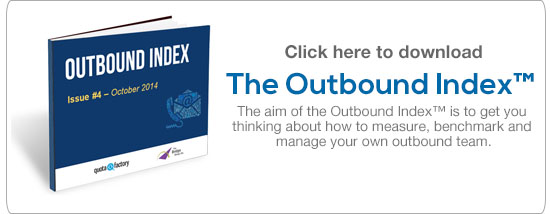
Sales Context is an important part of any conversation, as it directly correlates to the potential of a sale. With 54% of sales reps not making quota this year according to SiriusDecisions, it’s imperative that you teach your team to make the most of Sales Context, the information that can influence a sale. My job as an SDR is to extract these essential pieces of Sales Context for my clients while also nurturing a relationship with my prospects so they feel comfortable discussing their current environment and any pains they may be experiencing.
Here are 5 prospecting strategies that I employ to obtain Sales Context during every conversation I have.
1. Maintain an open dialogue.
Remaining positive and upbeat during a conversation can go a long way towards fostering meaningful dialogue with a prospect. The first way your B2B sales development team can obtain useful information is to initiate a conversation that will last beyond the introduction. However, maintaining an upbeat tone is not the only way to open up a conversation. Each question and statement should be open-ended, allowing for multiple answers. For example, if your rep starts a question off by saying, “You wouldn’t happen to….would you?”, the prospect can easily say “no” whether he or she knows the answer or not. This creates a “questionnaire” type of conversation, where the sales rep rattles off closed-ended questions and the prospect answers either yes or no. How will your team obtain quality information with this technique?
2. Don’t pigeon-hole the conversation.
An opening question can sometimes set a conversation up for failure. Leading a conversation with the wrong question can end a discussion before it is even started. There may be highly specific questions that you want your reps to ask, but make sure they save those for later in the conversation when they have a more general idea of the prospect’s environment. Your sales reps can then ask those more specific questions when they know enough to recognize whether they pertain to the conversation or not.
3. Know what questions to ask –- and ask them effectively.
Building on my prior point, it is important to know exactly what it is that you are trying to find out, and train your reps to structure the conversation accordingly. If you always ask the same questions, in the same order, regardless of what you have learned thus far in the conversation, you run the risk of engaging in a disjointed conversation. Coach your reps to actively listen to prospects and ask the questions they need answered only when it becomes appropriate to do so. Jumping around between unrelated questions will not only confuse prospects, but will also make them feel like you are treating them as if they are all the same. Thus, your reps will fail to build trust throughout the conversation, and trust is essential for obtaining Sales Context.
4. Leverage what you already know.
Active listening is an important part of a sales conversation. It helps to repeat back to your prospect what they have been telling you, and build on that information with your own knowledge and experience to get a point across and guide the conversation. What happens if your SDRs meets a prospect who doesn’t open up right away? Then, they can utilize their pre-call research. Maybe they spoke with someone else who gave you a brief idea of challenges experienced within the company that they can bring up in conversation. Or maybe they read an article about recent acquisitions that may require help they know their solution can provide. Whatever the topic of conversation, train your sales development reps to be ready to demonstrate how they can provide value based on what they already know about the prospect’s environment
5. Kill them with Kindness.
Finally, a little kindness can go a long way. Being respectful of your prospects’ time and building a relationship is an important part of the process of obtaining Sales Context. If you aren’t willing to build rapport with your prospect and make taking a call as painless as possible, you are only building on the awful stereotype of cold calls. Teach your reps to go the extra mile to be polite and friendly, regardless of how the other side initially reacts. Ask them, “Would you want to talk to yourself if you were on the other end of the phone?”
How do you ensure that every conversation your sales development team has is a productive one? Are there any strategies you can recommend or anything that you would do differently?




Join the Conversation